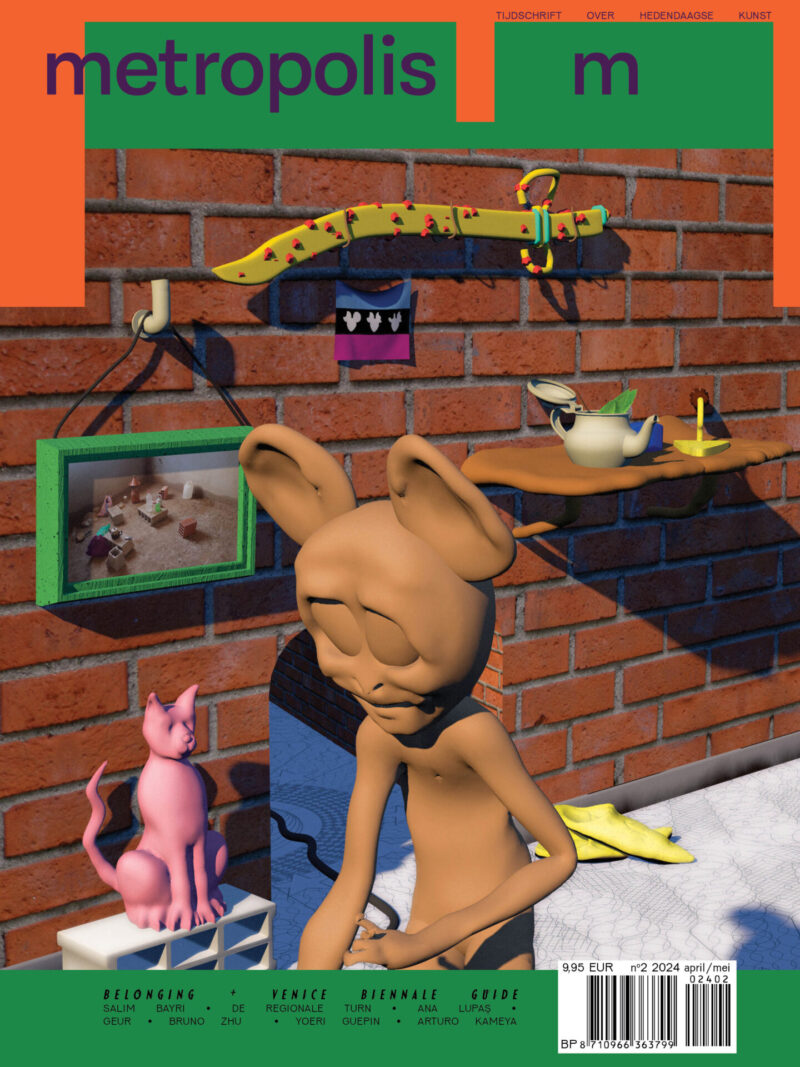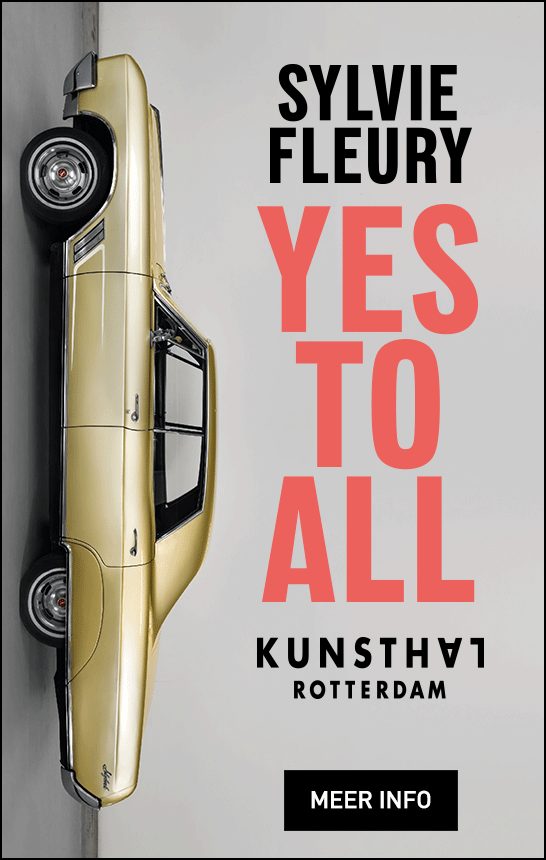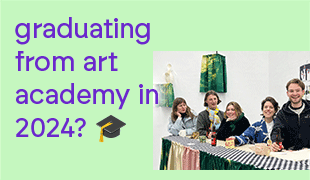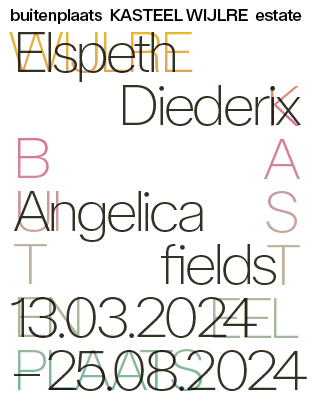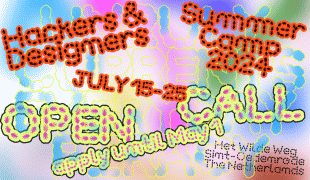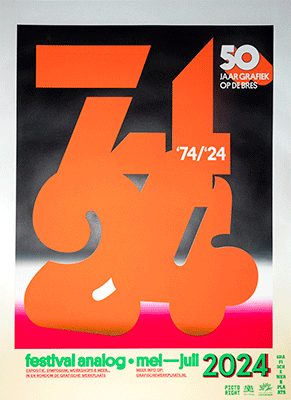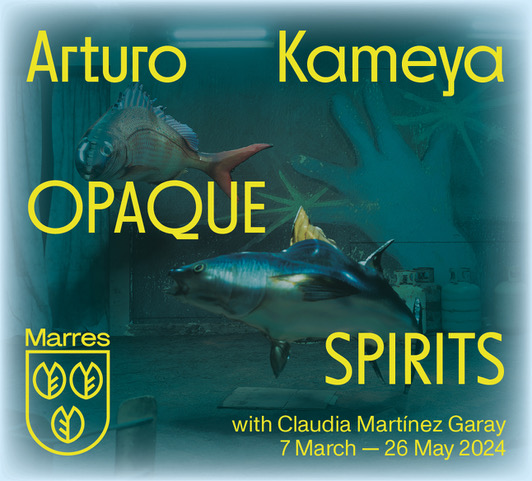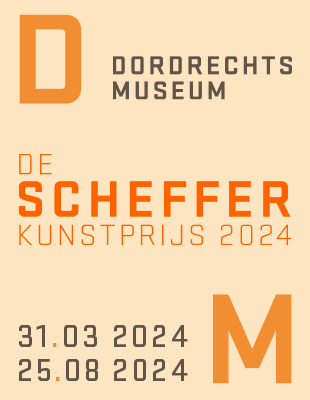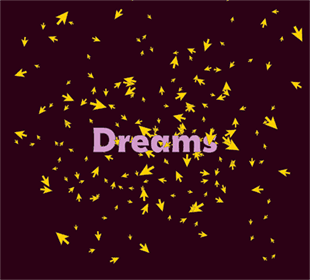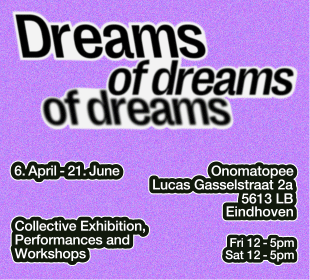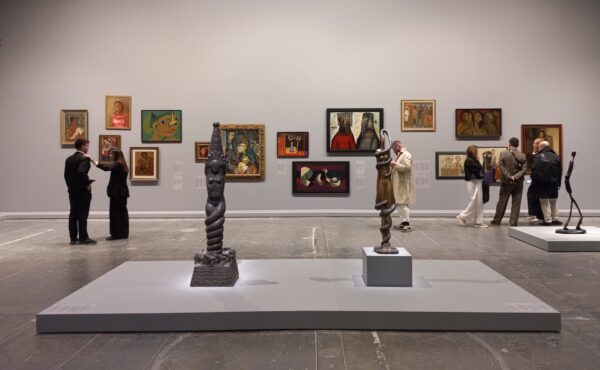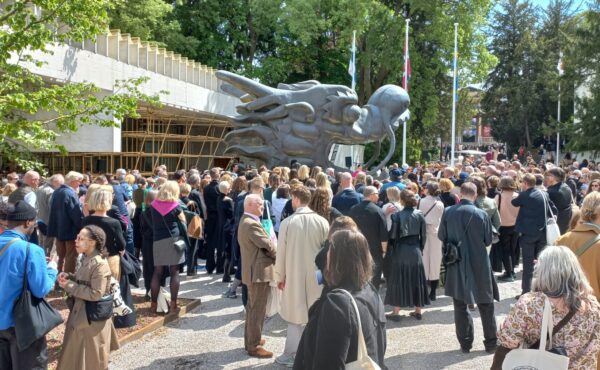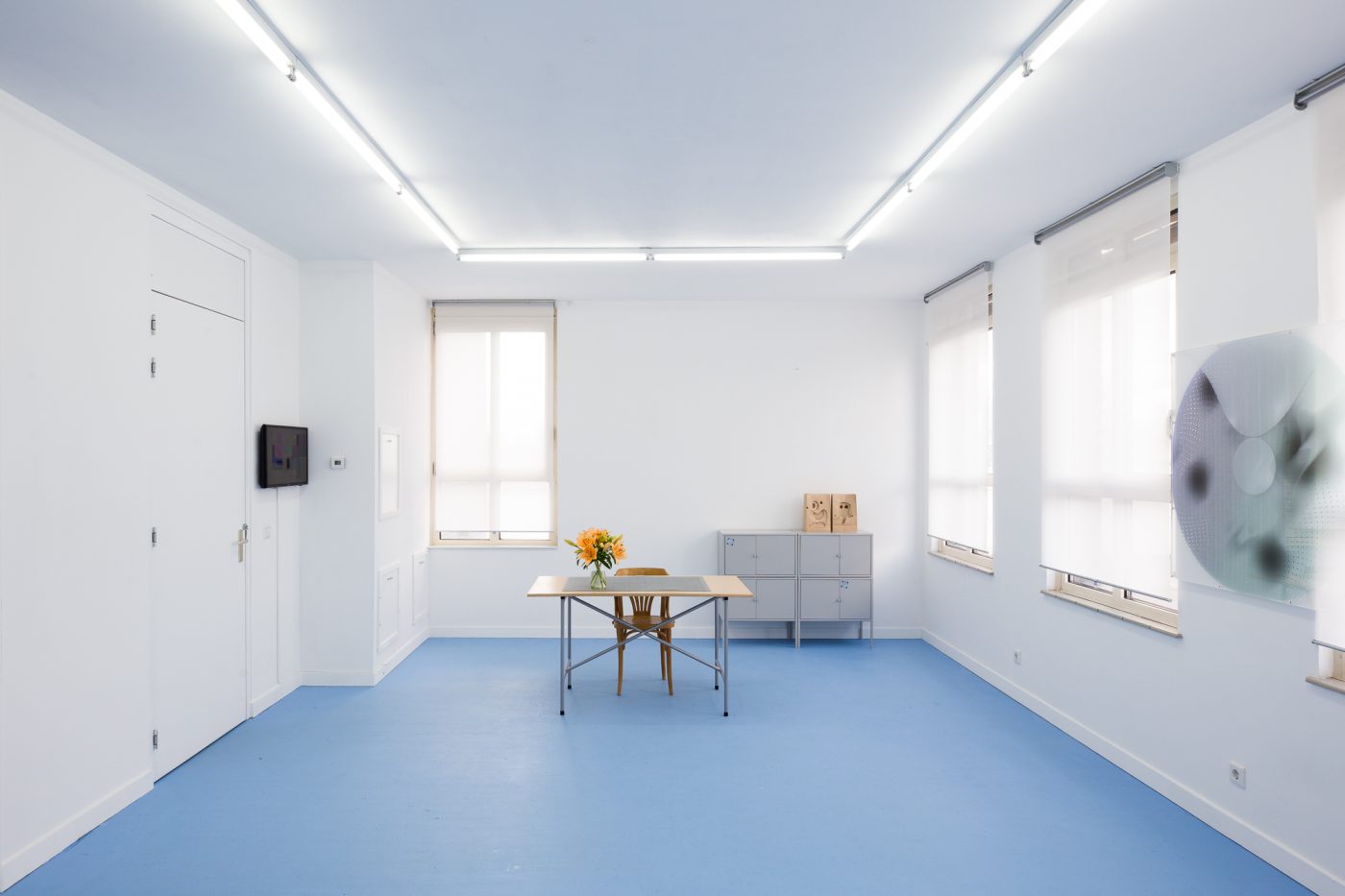
Installation View of Chapter 2, A Field Without Boundaries by Harm van den Dorpel in the context of World as Lover World as Self, 2021
Thinking in public – A portrait of Shimmer
What makes Shimmer so special? Nele Brökelmann talks to its curators Eloise Sweetman en Jason Hendrik Hansma to find out more about the ever changing art space in Rotterdam.
The view from Shimmer’s window consists of huge cranes, appearing in different constellations each day. The ‘experimental curatorial studio’ is situated in the proximity of Rotterdam’s port, and was set up three years ago. Ever since, I have been intrigued by its commitment to uncertainty and intangibility. Shimmer’s so-called ‘studio-like attitude’ results in exhibitions that are constantly rearranged, and a programme of events, online mix-tapes and readings that is constantly expanded.
I meet with initiators and directors Eloise Sweetman (AU/NL) and Jason Hendrik Hansma (AU/NL) to learn more about what drives Shimmer. Sweetman and Hansma explain to me that they want to sustain and encourage experimentation and ‘different kinds of learning’. Once initiated as a way to bring both of their practices together – Sweetman is a curator, Hansma is an artist – Shimmer still sets out to create cross-overs between curatorial- and artistic practice.
Sweetman calls her individual practice, which she developed during her residency at the Jan van Eyck Academy in 2016-2017, a curatorial studio. Turning her studio into an exhibition space, her exhibition at the Jan van Eyck slowly expanded to various spaces all over the academy and into her own home. Hansma calls his artistic practice an integrative practice in which his different ways of working with glass, fabric and photographs fade into, and out of, each other. For both Sweetman and Hansma being around art while working with art is important, which is why their office is installed in the midst of Shimmer’s exhibition space.
One of the first times I visited Shimmer was when I joined their event Sunday Morning With Dr. Cissie Fu. Fu is a political theorist and the dean of the Faculty of Culture + Community at Emily Carr University of Art + Design in Vancouver, Canada. Fu sat down on the same benches as the guests, breaking with the traditional speaker/listener setup. Her talk about the conditions that allow us to come together, and the importance of leaving moments of silence as a precondition for something to happen, was supported by the setting Shimmer had created. The participants could see one another and were positioned rather close to each other on one side of the room, leaving space for mental and physical retreat. For Fu, the possibility of retreat is a requirement ‘to gently move one’s attention and share a place equally with differences being present’. Shimmer aims to be a good host to their guests. Offering everyone who joins on such mornings a drink and a light lunch, they try to create a welcoming atmosphere. ‘We want to learn with our audience’, Sweetman explains.
‘We also want to build a community’, she continues, ‘along with other like-minded organizations throughout the world.’ The Finnish organization PUBLICS is such an organization, that supports the realization of projects by others, as for example Shimmer’s online reading program Across the Way. It is ‘an expanding series of informal readings of, with, and about intimacy in the public domain’, Sweetman describes. Listening to a voice can be an intimate experience: instead of facilitating discussions, Shimmer therefore wants to leave room for contemplation on the listeners’ own terms and chosen moments.
With their other series On The Waves, online since the start of Shimmer, they aim to provide access to artists’ studios: artists are asked to share music that helps them get into their workflow. With this ever-expanding mix-tape series, Shimmer wants to break their own bubble by asking the participants to invite other artists themselves as well. Sweetman and Hansma are surprised at how good the playlists are and listen to them while working.
Their online programs of course do not get effected by the current pandemic. But how has Covid influenced their exhibitions and Sunday morning gatherings? Hansma: ‘We believe in democratic exhibition making, and do not shy away from opening the space only for one visitor at a time. The Sunday mornings are a bit more tricky: it requires a bit more experimentation to achieve something inviting with the digital formats currently at hand.’
In the beginning of the pandemic, Sweetman and Hansma have captured the traces of their visitors thus far in a large-scale drawing. Shimmer’s guests left scratches, marks and dents on their wooden benches. During a live-stream Sunday Morning event Hansma captured those traces by laying long sheets of paper on the benches and going over them with graphite. While Hansma was drawing, Sweetman was reading a text she wrote after making the benches, that can also be set up as a shelf or table. The drawings were sent in parts to the homes of their live-stream audience with installation instructions.
Recently they have collaborated with the Critical Studies department at the Sandberg institute for an online workshop program within the concept of the Sunday Mornings, in which the participants were given small assignments in their own environments. In the third workshop, focussing on the body, the participants were asked to meditate on their individual organs, push their ear to an outside wall to closely listen, observe each other in the group call and writing down their observations without using the pronoun ‘I’. Shimmer also started a shared folder, in which everyone is free to share their writings to create an exchange among the participants. Not many have done that so far and Sweetman and Hansma admit that there is still quite some research to be done to find ways to use the restrictions of the online (meeting) platforms to generate encounters, rather than simply sending to the audience.
As curators Hansma and Sweetman are committed to letting things develop in their own time, while sometimes forcing them into new relations. They choose to revisit already existing artworks for the exhibitions they organize, and work on the installations together with the artists. ‘Artists need to want to be part of this process’, Sweetman says: ‘a process that asks for trying out setups in the exhibition space and finding new qualities in the artworks’. In the yearlong exhibition Higher, Higher! Lower, Lower. Louder, Louder! Softer, Softer. Shimmer re-contextualized works by older established artists, such as Theo van Doesburg and stanley brouwn, in combination with younger and less-known artists, such as Liu Chao-tz and Elena Narbutaite. Over the course of the year, they continuously rearranged an ever-changing combination of 18 artworks by 18 artists. As a visitor, you just get to see a glimpse of these dynamics of adding, removing and rearranging.
As we reach the end of our conversation Sweetman and Hansma characterize their approach to exhibition making as thinking in public, stressing the importance of leaving processes and thoughts unresolved so that new, unforeseen cross-overs can be brought about. It’s an approach that makes them vulnerable as curators as well: it is often only in hindsight that they are able to see what they have been doing. They do not always have straight answers. Yet, there is a certain aesthetic to Shimmer’s exhibitions. I wonder how the aforementioned processes boil down to Shimmer’s ‘clean’ exhibition set-ups. I would like to experience more of the messiness that thinking in public and the continuous rearranging entail. Nevertheless, Shimmer’s commitment to showing already existing works without giving immediate interpretations is a worthwhile approach. Shimmer’s concentration on small gestures and unresolved moments is inspiring and leaves me curious to see how this space will continue to develop in the future.
All images courtesy Shimmer Rotterdam
Currently on view: World as Lover, World as Self Chapter 2: A Field Without Boundaries by Harm van den Dorpel More info HERE
Nele Brökelmann
is beeldend kunstenaar